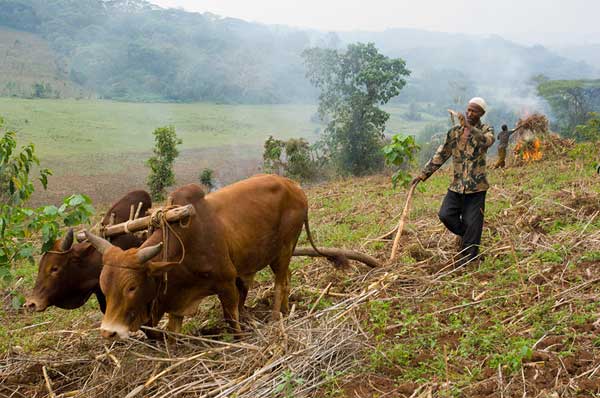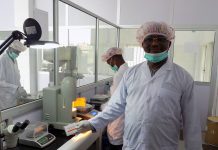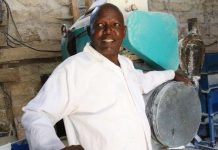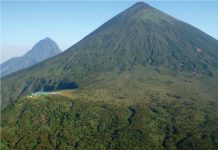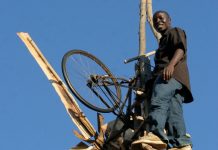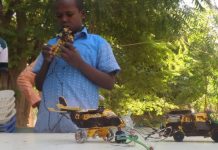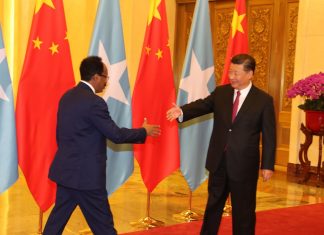(A column highlighting scientific, technological, engineering, and design innovation in Africa)
Ethiopian company Aybar Engineering PLC developed a low-cost tool that farmers can use to plough waterlogged fields. It is the first successful modification of the “maresha,” a 2000-year-old local ox-drawn implement used for plowing.
Waterlogging suffocates crops, resulting in reduced yields or even complete crop failure. In Ethiopia, the problem is particularly acute in the highlands, where farmers are able to use only 25 percent of an estimated 7.6 million hectares of fine-textured poor-drainage land, known as vertisoils, for crop production.
Invented by veteran researcher Melesse Temesgen, Aybar’s device is a broad bed and furrows maker (BBM) that helps to drain water from soils or fields with poor drainage, and store the excess water for later use. It comprises a detachable, winged metal unit that is fixed to a plough frame and drawn by oxen, and a separate attachment to the rear of the unit. The winged unit makes the furrow while the attachment to the unit makes the bed. The bed-making attachment can be adjusted according to the conditions of the soil.
The separate parts are inserted into each other, making the entire device convenient for smallholder African farmers who tend to lack access to nuts and bolts.
When the bed maker is removed, the winged unit can also be used in dry areas to make ridges to conserve moisture, for digging and even for planting potatoes. “This is probably the cheapest and the simplest ridger and furrow maker you can find in the world today,” Temesgen says.
Attempts to introduce the BBM to Ethiopia began 30 years ago, but the early prototypes developed by domestic and international researchers proved too heavy for local oxen to pull. In addition, the beds they constructed were not permanent – they were washed away by rain.
Aybar says its technology has enabled farmers to use agricultural inputs more efficiently, raising crop yields from 0.5-1.5 ton per hectare to 3.5-7 tons per hectare. In addition, the Aybar BBM has made it possible to plant wheat, Ethiopia’s main crop, earlier, which, in turn, allows farmers to practice double cropping (planting a second crop on the same land for harvesting in the same season). Aybar says farmers who double-cropped with chickpea saw an extra yield of up to 3 tons per hectare of chickpea.
Ethiopia’s Ministry of Agriculture says Ethiopia’s 5 million farmer households will be using the Aybar BBM.
Aybar has been manufacturing its BBM for the last three years. In the 2014 Innovation Prize for Africa competition, Temesgen’s Aybar BBM won the special prize for the innovation with the best social impact.


